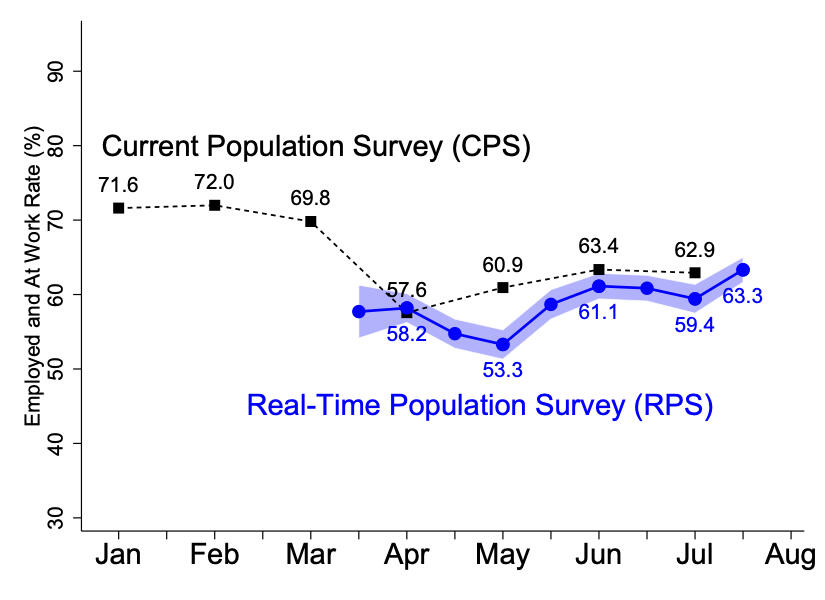
Aug. 10, 2020
New survey shows labor market recovery resuming
Real-Time Population Survey suggests labor market conditions are closely tied to concerns and uncertainty around COVID-19.
Share this story
The employment rate increased the week of July 26 through Aug. 1 by 3.2 percentage points since late June to 64.9%, according to a report by economists from Virginia Commonwealth University and Arizona State University. The unemployment rate decreased by 0.9 percentage points to 15% and labor force participation rose, consistent with a broad uptick in labor market activity.
During May and early June, a variety of data sources, including the Real-Time Population Survey conducted by Adam Blandin, Ph.D., an assistant professor in the VCU School of Business, and Alexander Bick, Ph.D., an associate professor of economics at Arizona State, reported a strong increase in employment. However, between early June and early July, employment was essentially flat.
“A pause in the labor market recovery from early June to early July may have reflected renewed economic uncertainty in the midst of a new wave of infections across several states,” Blandin said. “However, in late July the [Real-Time Population Survey] found that the labor market recovery was underway again, with employment increasing and unemployment falling. This coincides with a decline in new virus cases in the last two weeks, again suggesting that labor market conditions are closely tied to concerns and uncertainty around the virus.”
Blandin and Bick started the Real-Time Population Survey out of a desire to use their skills as economists to help policymakers, reporters, analysts and the public during the COVID-19 pandemic. Since launch, their research has been cited widely in national publications such as The Wall Street Journal, Bloomberg, Business Insider, Forbes, The New York Times and The Washington Post, and has drawn attention from notable economists worldwide.
The Real-Time Population Survey closely follows the methodology of the U.S. Bureau of Labor Statistics’ Current Population Survey. Blandin and Bick have made improvements with each survey wave and plan to continue refining their methodology going forward.The Real-Time Population Survey is conducted in collaboration with the Federal Reserve Bank of Dallas. The results from this survey do not represent official forecasts or views of the Federal Reserve Bank of Dallas, its president, the Federal Reserve System or the Federal Open Market Committee.
Subscribe to receive future results at https://sites.google.com/view/
Subscribe to VCU News
Subscribe to VCU News at newsletter.vcu.edu and receive a selection of stories, videos, photos, news clips and event listings in your inbox.










